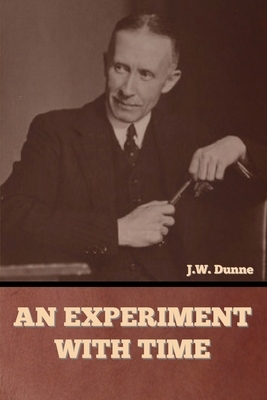
An Experiment with Time
Description
An Experiment with Time is a book by the British soldier, aeronautical engineer and philosopher J. W. Dunne about his precognitive dreams and a theory of time which he later called "Serialism". First published in March 1927, the book was widely read. Although never accepted by mainstream science, it has influenced imaginative literature ever since. Dunne published four sequels: The Serial Universe, The New Immortality, Nothing Dies and Intrusions?
An Experiment with Time discusses two main topics.
The first half of the book describes a number of precognitive dreams, most of which Dunne himself had experienced. His key conclusion was that such precognitive visions foresee future personal experiences by the dreamer and not more general events.
The second half develops a theory to try and explain them. Dunne's starting point is the observation that the moment of "now" is not described by science. Contemporary science described physical time as a fourth dimension and Dunne's argument led to an endless sequence of higher dimensions of time to measure our passage through the dimension below. Accompanying each level was a higher level of consciousness. At the end of the chain was a supreme ultimate observer.
According to Dunne, our wakeful attention prevents us from seeing beyond the present moment, whilst when dreaming that attention fades and we gain the ability to recall more of our timeline. This allows fragments of our future to appear in pre-cognitive dreams, mixed in with fragments or memories of our past. Other consequences include the phenomenon known as deja vu and the existence of life after death.
The popularity of An Experiment with Time was reflected in the many authors who subsequently referenced him and his ideas in literary works of fiction. He "undoubtedly helped to form something of the imaginative climate of those interwar] years". One of the first and most significant writers was J. B. Priestley, who based three of his "Time plays" around them: Time and the Conways, Dangerous Corner, and An Inspector Calls.
Dunne's theory strongly influenced the unfinished novels The Notion Club Papers by J. R. R. Tolkien and The Dark Tower by C. S. Lewis. Tolkien and Lewis were both members of the Inklings literary circle. Tolkien used Dunne's ideas about parallel time dimensions in developing the differing natures of time in The Lord of the Rings between "L rien time" and time in the rest of Middle-earth. Lewis used the imagery of serialism in the afterlife he depicted at the end of The Last Battle, the closing tale in the Chronicles of Narnia.
Other contemporary writers who used his ideas, whether as a narrative or literary device, included John Buchan (The Gap in the Curtain), James Hilton (Random Harvest), his old friend H. G. Wells (The Queer Story of Brownlow's Newspaper and The Shape of Things to Come), Graham Greene (The Bear Fell Free) and Rumer Godden (A Fugue in Time). Literary figures less overtly influenced included T.S. Eliot, James Joyce and Flann O'Brien.
Following Dunne's death in 1949, the popularity of his themes continued. Philippa Pearce's 1958 childhood fantasy Tom's Midnight Garden won the British literary Carnegie Medal. The writer Vladimir Nabokov undertook his own dream experiment in 1964, following Dunne's instructions, and it strongly influenced his subsequent novels, especially Ada or Ardor: A Family Chronicle. (wikipedia.org)
